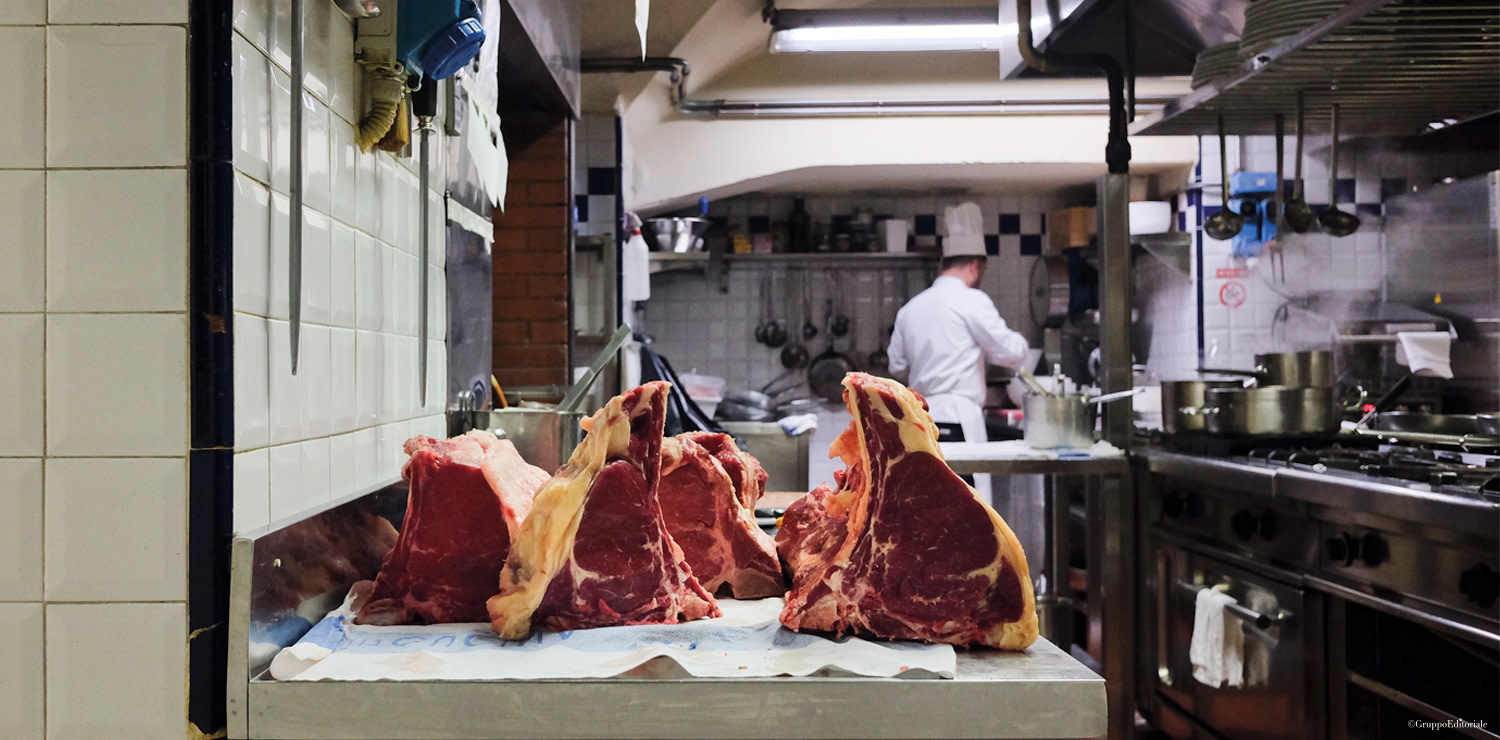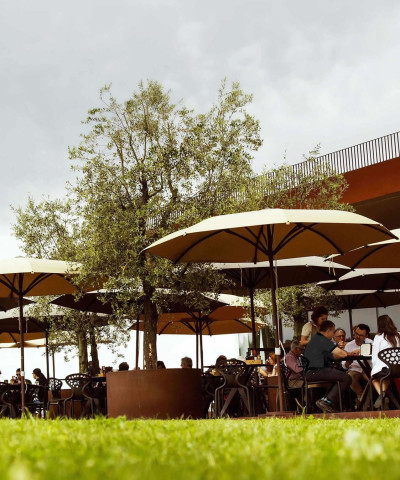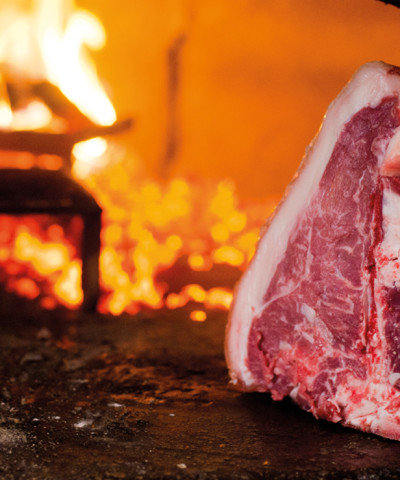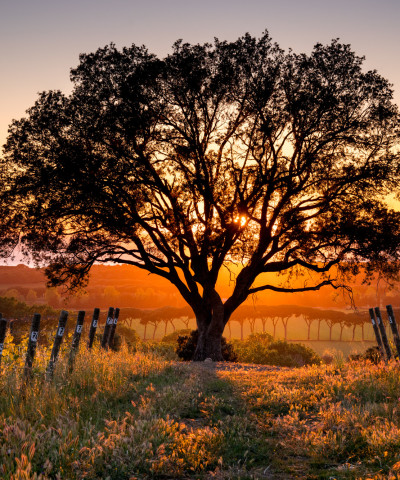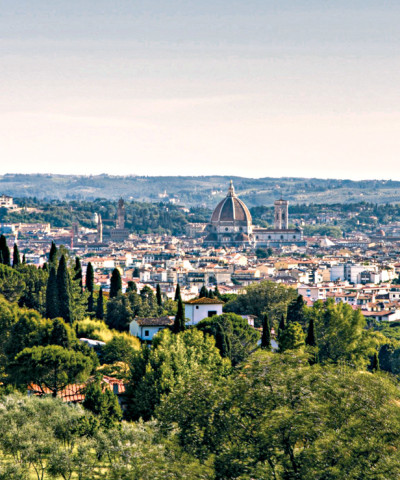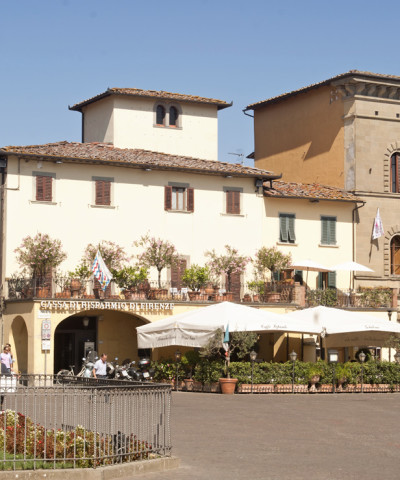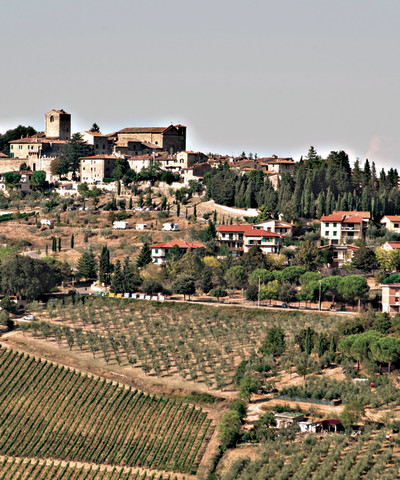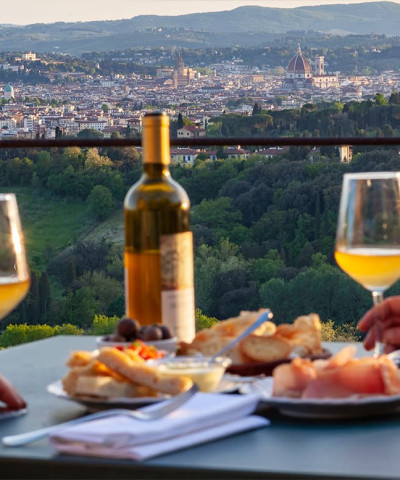Bistecca alla Fiorentina has become Doc
Everything you need to know about the great Florentine dish that has been included in the list of traditional food products (PAT)
What does a real Bistecca alla Fiorentina look like? Fiorentina is a Tuscan beef steak cut 3-4 fingers high in the loin and cooked rare on the grill. This definition encapsulates everything about this world-famous dish, which has now been added to the PAT list (the list of traditional Italian food products set up by the Ministry of Agriculture, Food and Forestry Policies in collaboration with the Regions).
Classifications aside, what exactly a great steak should look like is not easy. "Generally speaking - as we read in Allan Bay's preface to the book on Fiorentina, edited by Aldo Fioredelli for our Publishing Group - it is the bovine fillet and sirloin that includes the T-shaped bone with meat on both sides, although it is fair to distinguish whether it is cut from the back of the loin and then includes more fillet, or one cut from the front that contains a smaller portion of fillet". "It's an expensive cut,' he continues, 'which, in the collective imagination, is the epitome of good meat. It is also a popular cut because the meat is always tender and therefore cooks quickly.
THE ORIGIN OF THE NAME
The name bistecca (steak) was invented by us Florentines, who have a habit of Italianising foreign words by putting a vowel at the end and doubling the consonants. Thus beef-steak, the rib of beef, became bistecca.
The first official document is from the Accademia della Crusca in 1750, but we can go back to 1624 and the Uffizi, in the Dispensa by Jacopo Chimenti, known as l'Empoli, who, with his 16th-century Florentine reformed painting, depicts a rib-steak with lucid naturalism. Then we come to Science in the Kitchen (recipe 556). Artusi, a superb gastronomic scholar as well as a questionable cook, suggested a steak "a finger high, at most a finger and a half" to be sent to the table "with a piece of butter on top". In Florence, everyone knows the saying that under four fingers is not steak but carpaccio. In reality, tradition calls for a height of about three fingers as confirmed by Vasco Tacconi, Grand Master butcher of the Academy of Steak.
HISTORY
This dish originated on farms at the end of the 19th century when old cows or castrated calves were slaughtered. Meat that is too young is not good for the Fiorentina.
And speaking of "beccai", it is worth saying a few words about the origin of this name which sounds strange to our ears today. In the Middle Ages the butcher was called beccaio because the most common meat was goat, especially the male, which is still called 'becco' in the countryside.
In Florence, the guild of butchers was held in high regard. Throughout the Middle Ages and into the 17th century, the activities of Florentine butchers were all located on the Ponte Vecchio. And do you know why? From the most beautiful bridge in the world across the Arno, the butchers would slide their scraps into the river water, which would then flow towards the sea and carry them away. It was Grand Duke Fedinando I de' Medici who sent the butchers away from the Ponte Vecchio because he was annoyed by the bad smells during his daily trips from Palazzo Pitti (the Medici palace) to Palazzo Vecchio (the seat of the Florentine government) via the Vasari Corridor that passes over the Ponte Vecchio, and replaced them with goldsmiths.
MEAT
But back to us and our steak. The Fiorentina comes from the butchering of the adult bovine which is the castrated beef otherwise it would become bull. Sometimes from the scottona, if virgin. The maturity of the animal introduces the importance of long maturation. A procedure that serves to degrade the fibres of the meat, making it softer and to develop protein, increasing the flavour of each mouthful.
THE BREEDS
For a real PAT certified steak from now on Tuscan breeds (Chianina, Calvana, Maremmana) or other breeds as long as they are bred in Tuscany will be necessary. Butchers and restaurateurs will have to renounce the good French and Spanish Limousines if they want certification.
THE CUT
Another detail that distinguishes the Fiorentina is the cut in the fillet. Many experts also love the rib steak, not entirely wrongly, which is why an exception to the rule could be made. But the cut is not only the butcher's, it is also the gourmet's. Never with hacksaw knives, never with a knife. Never with hacksaw knives, always with a smooth blade. Better if from Scarperia, handmade like those of Leonardo Saladini.
BUTCHERS
Tuscany is full of legendary butchers. But some deserve mention when it comes to Bistecca alla Fiorentina. From the poet butcher Dario Cecchini in Panzano in Chianti (a great supporter of meat from wild cows raised in the Pyrenees National Park in Catalonia) to Stefano Bencistà Falorni of the Antica Macelleria Falorni in Greve in Chianti, from Simone Fracassi in Rassina in the province of Arezzo to Luca Menoni whose butcher's shop is inside the Sant'Ambrogio market in Florence.






